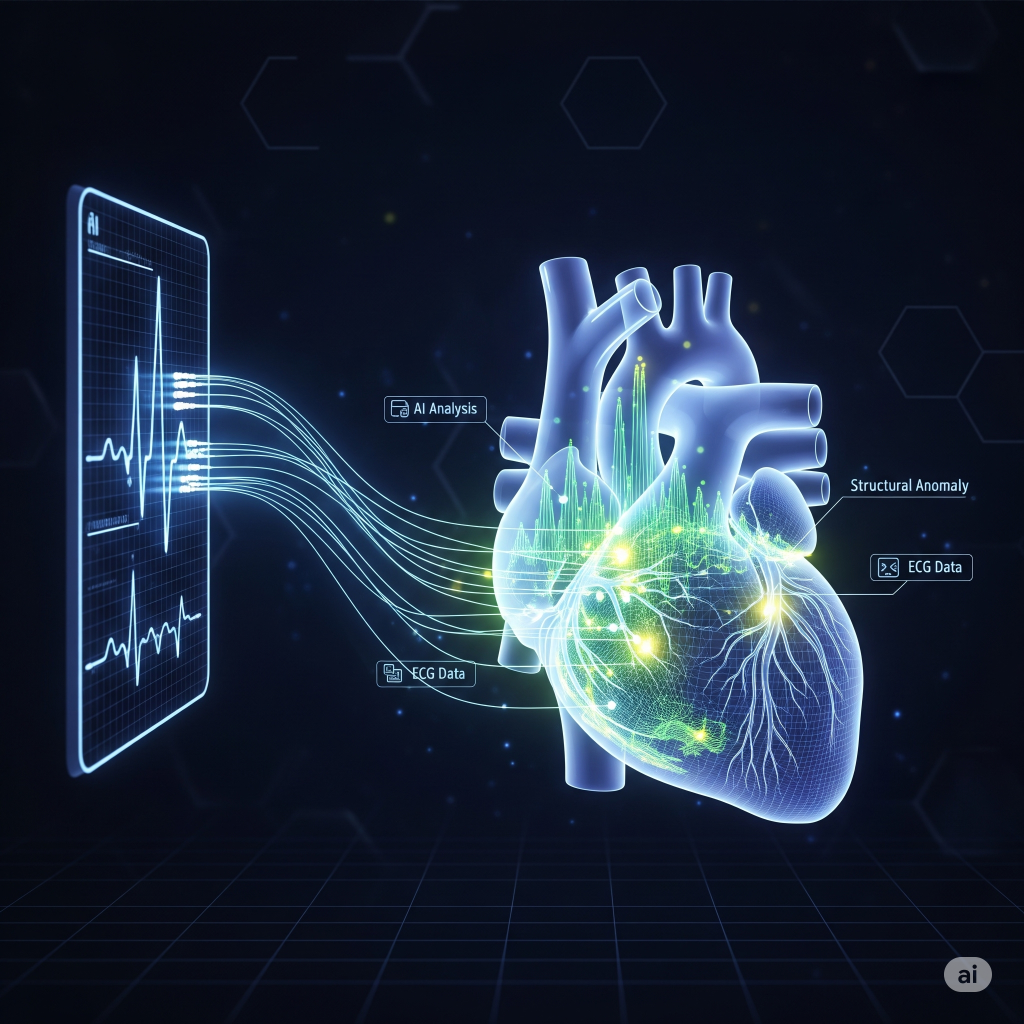A new artificial intelligence tool called EchoNext is making waves in cardiology by outperforming trained physicians at detecting hidden structural heart disease—a condition that often goes unnoticed until it becomes life-threatening.
In a recent study, EchoNext demonstrated an impressive 77% accuracy in detecting structural abnormalities by analyzing simple electrocardiogram (ECG) data. In comparison, cardiologists analyzing the same information achieved an average accuracy of 64%.
This breakthrough not only challenges long-standing diagnostic processes but could revolutionize how cardiovascular disease is screened—especially in primary care settings or areas with limited access to specialists.

What Is Structural Heart Disease?
Structural heart disease refers to abnormalities in the heart’s anatomy—such as valve defects, wall thickening, or chamber dilation. Many of these issues can exist silently for years without symptoms. Left undetected, they can lead to heart failure, stroke, or sudden cardiac death.
Traditionally, detection requires an echocardiogram—an ultrasound test of the heart—but echocardiograms are expensive, time-consuming, and not always available in low-resource settings.
How EchoNext Works
EchoNext was developed as an AI-enhanced pre-screening tool. It uses machine learning algorithms to analyze data from a standard 12-lead ECG—a common, quick, and inexpensive diagnostic test.
The AI assesses the electrical signals to flag subtle patterns that may suggest an underlying structural issue, which might be invisible to the human eye. High-risk patients are then recommended for follow-up echocardiograms.
In practice, this means physicians could use ECG results, which are already a part of most routine checkups, to identify patients who may benefit from further testing—even if they are asymptomatic.
The Study: AI vs Human Specialists
In a controlled study, researchers provided ECG data to both EchoNext and experienced cardiologists. Each was tasked with identifying patients likely to have structural abnormalities.
- EchoNext correctly identified at-risk patients 77% of the time.
- Human cardiologists averaged 64% accuracy.
- The AI also reduced unnecessary echocardiogram referrals by avoiding false positives more effectively than human readers.
Notably, EchoNext was trained on a large and diverse dataset, allowing it to detect patterns that are often missed or misinterpreted due to human bias, fatigue, or limited experience with rare presentations.
Why This Matters
Cardiovascular disease remains the leading cause of death globally. Early detection is crucial—but current screening protocols often miss asymptomatic or subtle cases.
EchoNext has the potential to:
- Improve early diagnosis of structural heart disease.
- Reduce costs by minimizing unnecessary echocardiograms.
- Expand access to care in under-resourced regions by using low-cost ECGs as an initial filter.
- Standardize screening accuracy across clinicians of varying experience.
Limitations and Next Steps
While the results are promising, EchoNext is not a replacement for cardiologists—it’s a tool designed to augment clinical decision-making. Its effectiveness in real-world, high-volume clinical settings is still being evaluated.
Questions remain:
- Will physicians trust and adopt AI-driven screening recommendations?
- How will these tools be integrated into current diagnostic workflows?
- Are the algorithms equally accurate across diverse populations and comorbidities?
Future iterations of EchoNext are being trained to detect other heart conditions and are undergoing regulatory review for broader clinical deployment.
Conclusion
EchoNext is a prime example of how artificial intelligence is reshaping medicine—not by replacing doctors, but by enhancing their capabilities. By improving early detection of structural heart disease through affordable, accessible screening, tools like EchoNext could save lives, reduce healthcare costs, and bring precision diagnostics to the frontlines of care.
As AI continues to evolve, it’s clear that the stethoscope of the future might not just be a tool for listening—it might also be a tool for seeing what humans can’t.

Leave a Reply